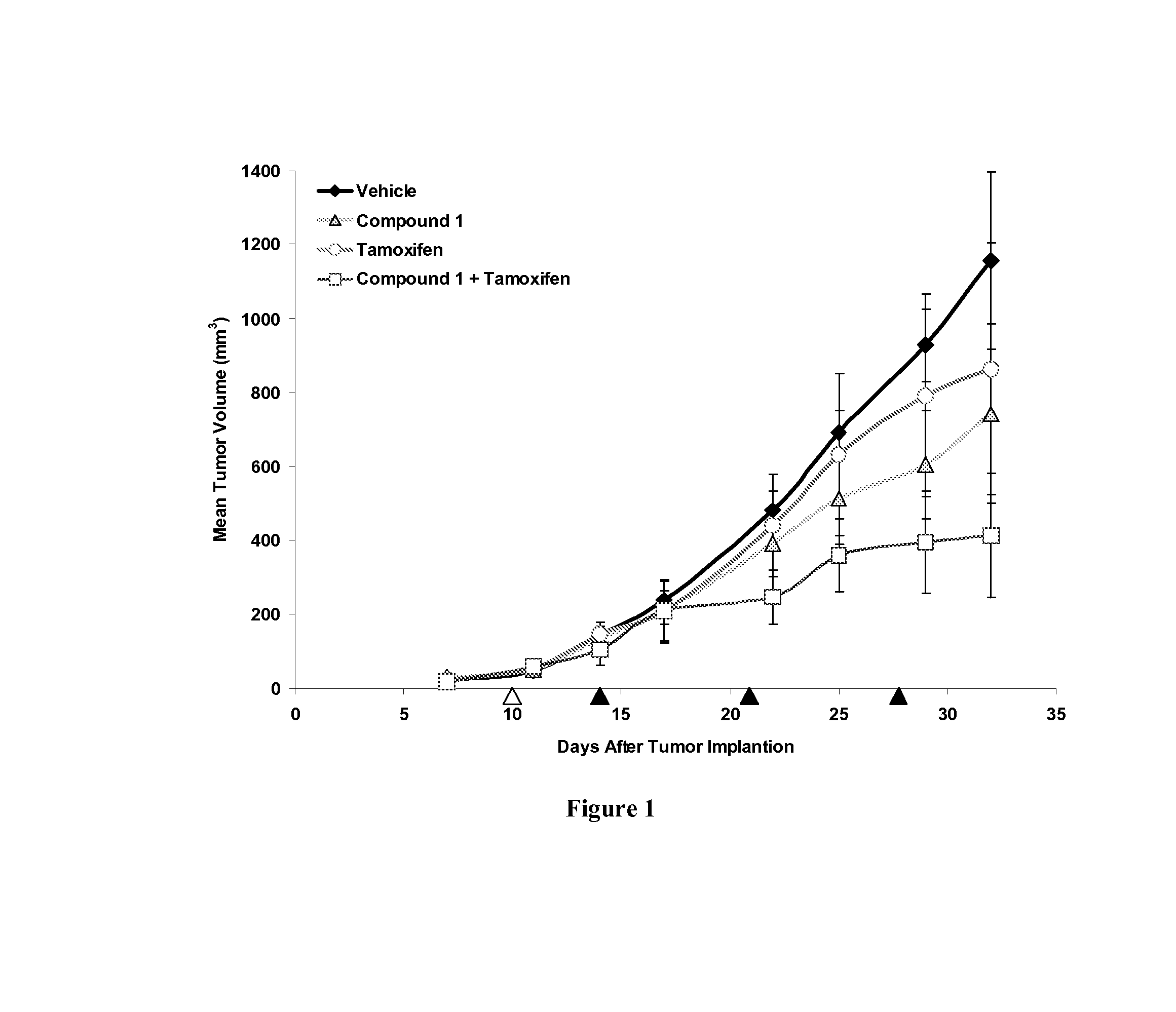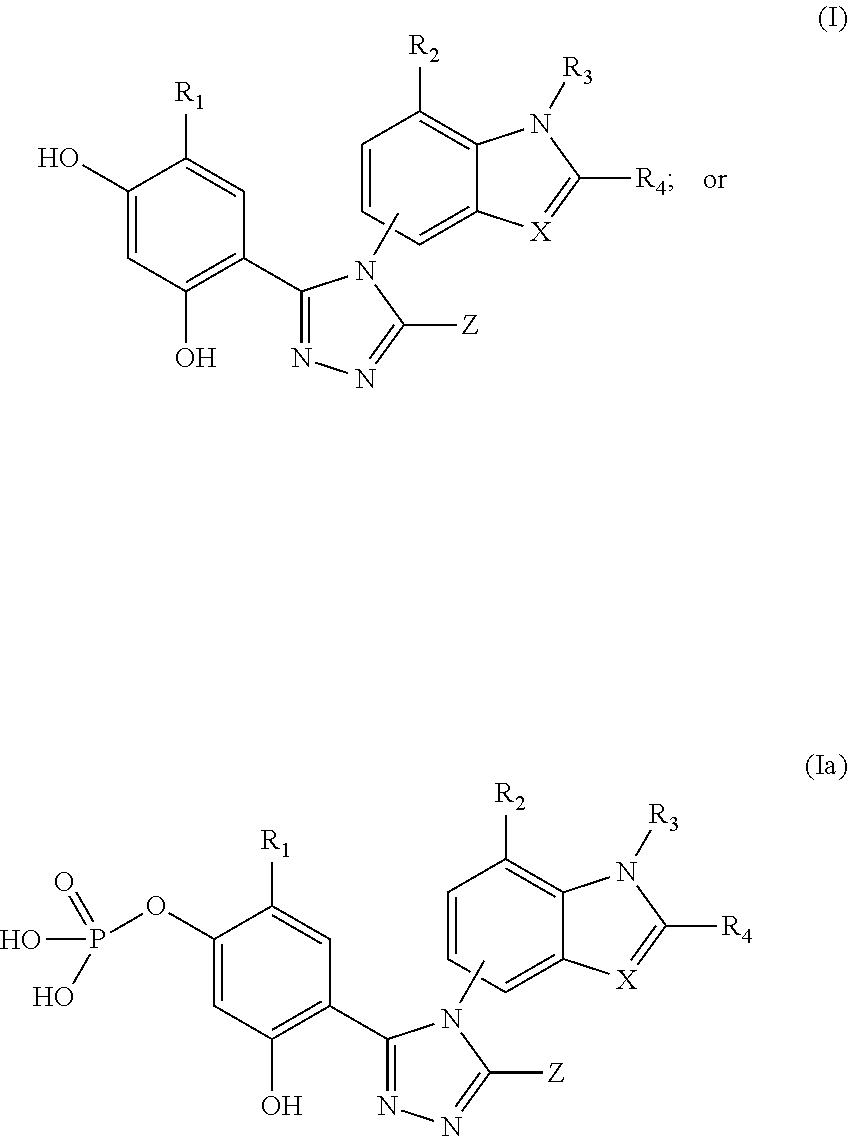Combination breast cancer therapy with hsp90 inhibitory compounds
a breast cancer and inhibitory compound technology, applied in the direction of heterocyclic compound active ingredients, biocide, drug compositions, etc., can solve the problem of the frequent development of acquired resistance in the efficacy of hormonal therapies in the management of advanced breast cancer, and achieve the effect of reducing the efficacy of a second chemotherapeutic agent, preventing or reducing the development of drug resistant breast cancer, and surprising synergistic
- Summary
- Abstract
- Description
- Claims
- Application Information
AI Technical Summary
Benefits of technology
Problems solved by technology
Method used
Image
Examples
example 1
Compound 1 Enhances the Anti-Tumor Activity of Tamoxifen Against Human Breast Tumor Cells in a Mouse Xenograft Model
[0185]The human breast cancer cell line, MCF-7, was obtained from the American Type Culture Collection (Manassas, Va., USA) and grown according to the ATCC guidelines. MCF-7 xenografts were established in twenty nude mice (Charles River Laboratories, Wilmington, Mass., USA) supplemented with slow release estrogen pellets as previously described, using 5×106 cells (1), and randomized into treatment groups. Ten days after cells were inoculated half of the animals were supplemented with slow release tamoxifen pellets.
[0186]To formulate Compound 1 in 10 / 18 DRD, stock solutions of the test article were prepared by dissolving the appropriate amounts of the compound in dimethyl sulfoxide (DMSO) by sonication in an ultrasonic water bath. Stock solutions were prepared weekly, stored at −20° C. and diluted fresh each day for dosing. A solution of 20% Cremophor RH40 (polyoxyl 40 ...
PUM
| Property | Measurement | Unit |
|---|---|---|
| Dimensionless property | aaaaa | aaaaa |
| Dimensionless property | aaaaa | aaaaa |
| Mass flow rate | aaaaa | aaaaa |
Abstract
Description
Claims
Application Information
 Login to View More
Login to View More - R&D
- Intellectual Property
- Life Sciences
- Materials
- Tech Scout
- Unparalleled Data Quality
- Higher Quality Content
- 60% Fewer Hallucinations
Browse by: Latest US Patents, China's latest patents, Technical Efficacy Thesaurus, Application Domain, Technology Topic, Popular Technical Reports.
© 2025 PatSnap. All rights reserved.Legal|Privacy policy|Modern Slavery Act Transparency Statement|Sitemap|About US| Contact US: help@patsnap.com



